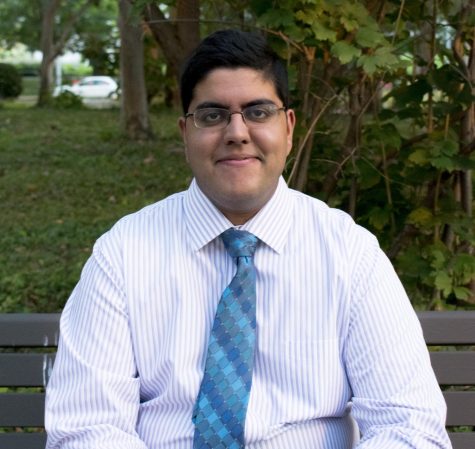Junior designs process to help automate cell imaging
Spotlight on Research
Junior Dana Jeter always wondered why the little antenna that sticks out of a satellite dish is placed where it is. The answer is what got her interested in mathematics during a calculus class in high school.
“It’s the basis for all science,” she said. “I didn’t know where I wanted to go. If I stick with math, I can do anything.”
Still, even she may not have expected to do the work she has come across.
Last summer, Jeter designed a process that transformed scattered 3-D pictures of a cell’s insides into visualizations that showed the location and expression of genes inside. The researchers stacked still shots of cells, creating a colorful picture of dispersed dots blended together.
It was up to Jeter and a graduate student to make sense of it. While she has been working with the lab since her first year, she spent last summer exclusively working on the project. She remembered spending all day in Nord’s fourth floor computer lab. The work was taxing, so she tried to do eight-hour shifts, but many times worked into the night.
“The thing about research is it’s not like a 9-5 job,” she said. “You go home and you’re still thinking about it.”
The first step in Jeter’s process is to change the image’s intensity so that borders between cells are clearly labeled. Next, she would have to find seeds in the image using a technique termed graph cuts. This involves defining sources and sinks in the image.
Imagine looking at a mountain and canyon side-by-side from above. Relative to the ground, the canyon is a sink, the mountain a source. She coded the program to create the smallest line possible between the sources and sink which identified the seeds.
A different technique, called Fourier transforms, also does this. Depending on picture, she would have to choose one or sometimes even use both methods separate parts.
Next is watershed, a technique that defines the topology of an image. Jeter turned the colorful image into a black and white one, where a pixel’s shade of gray defines its intensity.
Tying everything together, she coded the program to drop a figurative water drop on the image, flooding sinks. This turns images full of blobs of gray into a crystal white and black one. After this, Jeter brought the color back, and the dye combinations classified which cells had which genes.
After working with the data for a long time, she was able to develop a code to automate the beginning portion for the lab. Now, users simply have to click to make the seeds after the program has cleaned the image. Still, what she spent all day doing was strenuous, but she likes the colossal task over small work.
“I wanted to work with big data sets and get something out of these big data sets,” she said. “It’s really cool to have a whole group of numbers and interpret them.”
Taking a complete turnaround from what she has been doing, but sticking to her love of challenge, Jeter is working this summer at Key Bank. There, she is doing risk analyses on the loans that the bank gives out. The bank has models that show the state of the economy. She gave the example of how when gas prices dropped, pipe company loans became more risky, but shipping companies less so.
Back to what interested her in high school, she explained that the antenna is actually a focal point of the parabola that the dish makes. With math Jeter can always find something interesting in a range of disciplines.
“That’s what’s nice about math,” she said. “You can do anything.”

Kushagra Gupta is a cognitive science and biology student and is working towards a masters in medical physiology. He's served as The Observer’s The Director...

